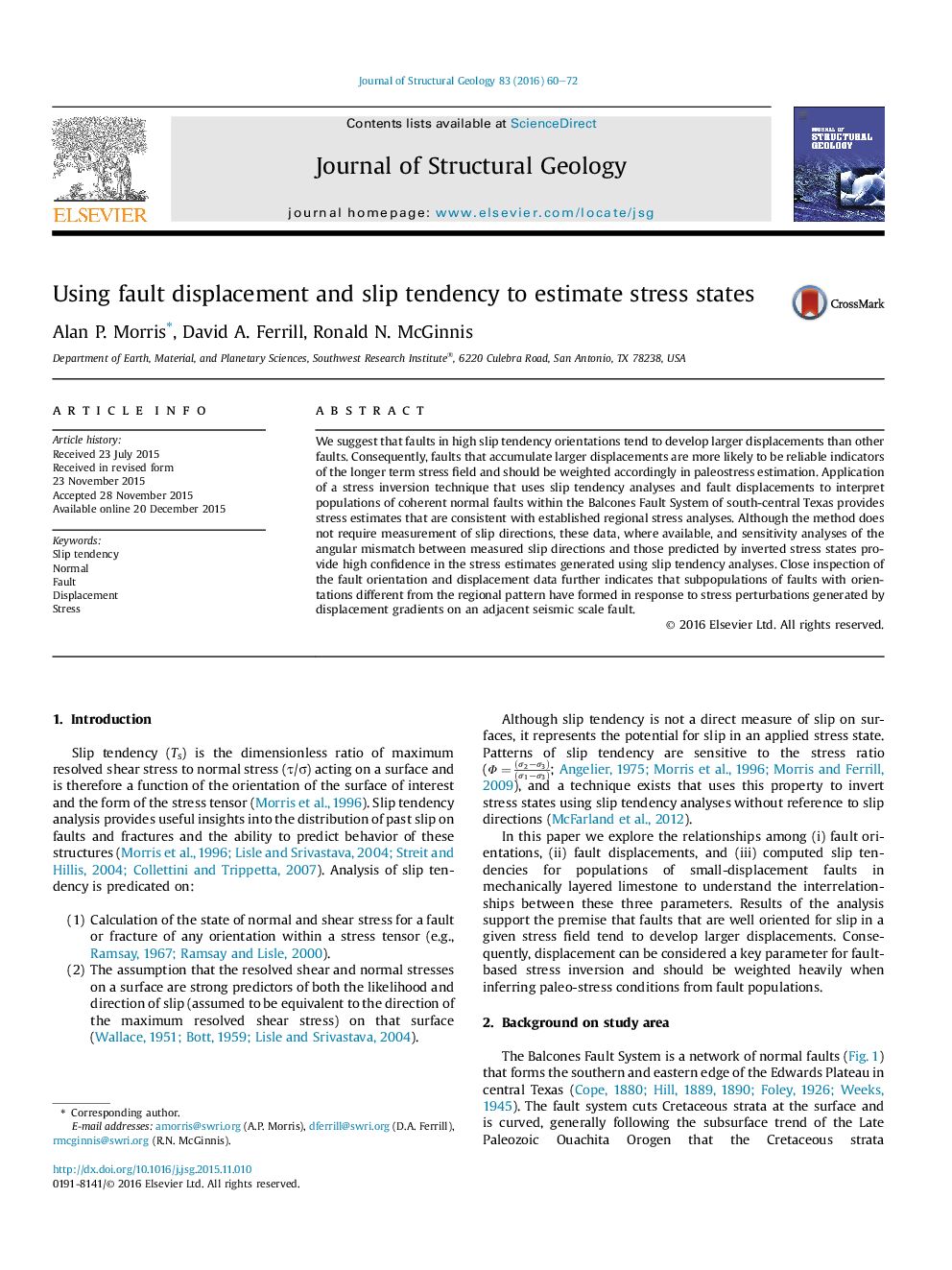| Article ID | Journal | Published Year | Pages | File Type |
|---|---|---|---|---|
| 4732970 | Journal of Structural Geology | 2016 | 13 Pages |
•Faults in high slip tendency orientations develop larger displacements than other faults.•Slip tendency and fault displacement yield good quality stress estimates.•Knowledge of slip directions is not required, therefore a range of attributes can be used to invert stress.
We suggest that faults in high slip tendency orientations tend to develop larger displacements than other faults. Consequently, faults that accumulate larger displacements are more likely to be reliable indicators of the longer term stress field and should be weighted accordingly in paleostress estimation. Application of a stress inversion technique that uses slip tendency analyses and fault displacements to interpret populations of coherent normal faults within the Balcones Fault System of south-central Texas provides stress estimates that are consistent with established regional stress analyses. Although the method does not require measurement of slip directions, these data, where available, and sensitivity analyses of the angular mismatch between measured slip directions and those predicted by inverted stress states provide high confidence in the stress estimates generated using slip tendency analyses. Close inspection of the fault orientation and displacement data further indicates that subpopulations of faults with orientations different from the regional pattern have formed in response to stress perturbations generated by displacement gradients on an adjacent seismic scale fault.
